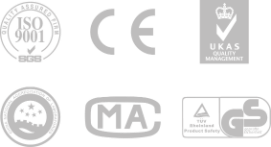Preschool Relaxing Area

Daycare Relax Room
Designing a preschool relaxation room is an important part of creating a safe and comfortable learning environment for young children. A well-designed relax room can provide children with a place to take breaks, practice mindfulness, and foster creativity. It should be inviting, calming, and equipped with age-appropriate furniture and activities that will help children develop healthy relaxation habits. This article will explore the various design ideas for creating a preschool relax area that is both enjoyable and educational for young learners.
Take a Break From Busy Day
Preschool relaxation room is becoming increasingly popular in kindergartens and daycares. These special spaces provide children with a place to relax and unwind, providing them with an opportunity to take a break from their busy day. They also help promote healthy development by allowing children to explore their emotions and learn how to self-regulate.
Designing the perfect preschool relaxation room is essential for creating an environment that is both calming and fun for children. By incorporating elements such as comfortable seating, soft lighting, natural materials, and soothing music, you can create a space that encourages relaxation and self-reflection. Furthermore, it’s important to consider the needs of the individual child when designing these spaces as each child may have different preferences when it comes to relaxation.
Creating a Relaxing Preschool Room: Tips and Ideas
Preschool can be a stressful and overwhelming experience for young children. Creating a relaxing and peaceful environment in the classroom can help children feel more calm and more focused. In this guide, we’ll explore tips and ideas for creating a preschool relaxation room that promotes a sense of tranquility and well-being.
Choose Soothing Colors and Decor
The colors and decor in a preschool relax area can have a big impact on the mood and energy of the space. Choose calming colors like blues, greens, and soft pastels for the walls and furniture. Avoid bright, bold colors that can be overstimulating. Incorporate natural elements like plants, rocks, and wood to create a sense of connection to the outdoors. Soft lighting and comfortable seating can also contribute to a relaxing atmosphere.
Incorporate Natural Elements
Adding natural elements to a preschool room can create a calming and peaceful environment for children. Consider adding plants, rocks, and wood to the space. Plants not only add a touch of greenery, but they also help purify the air. Rocks can be used for sensory play and as a calming tool for children to hold and feel. Wood can be incorporated into furniture or decor to create a sense of warmth and connection to nature.
Provide Comfortable Seating and Soft Lighting
Comfortable seating and soft lighting are essential for creating a relaxing preschool room. Children should have access to comfortable chairs, bean bags, or floor cushions where they can sit and read or engage in quiet activities. Soft lighting, such as lamps or string lights, can create a cozy and calming atmosphere. Avoid harsh fluorescent lighting, which can be overstimulating for young children.
Organize Materials and Toys
A key aspect of creating a relaxing preschool space is organizing materials and toys in a way that is easy for children to access and use. Consider using open shelving or clear bins to store toys and materials, making it easy for children to see and choose what they want to play with. Keep materials and toys organized by type or theme, and rotate them regularly to keep things fresh and interesting for the children. A well-organized room can help children feel more in control and reduce stress and anxiety.
Create a Quiet Area for Rest and Reflection
A great way to introduce space exploration is to teach students about celestial bodies in outer space. Stimulate their curiosity by letting them explore a variety of exciting topics like the sun, moon, stars, and planets. Talk about the different sizes and shapes of these heavenly bodies, as well as their general location in the universe. Discuss interesting facts like the age of some of these celestial bodies and how they interact with one another within our solar system!
Conclusion
In addition to providing opportunities for active play and exploration, it’s important to create a quiet area in your preschool space where children can rest and reflect. This area can be as simple as a cozy corner with soft pillows and blankets, or a designated space with comfortable chairs or bean bags. Encourage children to use this area when they need a break from the noise and activity of the classroom, or when they want to read a book or engage in quiet play. A quiet area can help children feel calm and centered, and can also promote self-regulation and emotional awareness.

